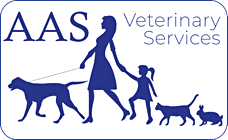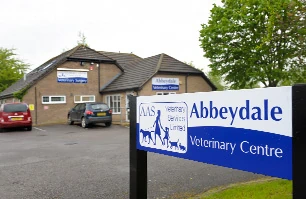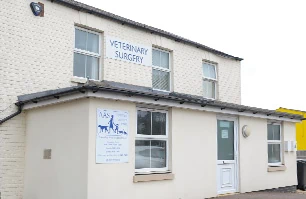Dogs' nutritional requirements change according to their life stage, with puppies, adults and senior dogs all having different nutritional requirements.
Home-prepared diets are complex and need to be balanced correctly. Feeding a commercial 'complete' diet provides all the nutrients in the correct amounts and proportions. Diets are available which cater for the specific needs of your dog, from being a puppy, to an adult and then senior.
Diabetes Mellitus
Diabetes is a disease caused when there is not enough insulin in the body. Insulin is a hormone which keeps blood sugar (glucose) at an optimum level. When there is a lack of insulin, blood sugar levels increase.
If untreated the disease has serious effects and will ultimately result in the death of your pet. The good news is that the majority of diabetic animals can now be treated and may live normal, happy lives if you are prepared to invest time and money in their care.
Signs
- Increased thirst
- Often lose weight despite having a good appetite
- If the condition is untreated, liver disease, problems walking or other illness may develop.
- If the early signs of diabetes are missed, more serious signs such as vomiting and depression may develop.
- If diabetes is left untreated for weeks or months your dog could go into a coma and die.
Causes
Unfortunately, some dogs are just more likely to develop the disease than others. Obese dogs are at a higher risk and there may be other causes as well.
Treatment
Most diabetic dogs require regular insulin injections to control their blood sugar levels. Diabetes rarely goes away completely and so these injections must be given on a regular basis (usually once or twice a day), for the rest of your dog's life. In some obese dog’s weight loss may control their diabetes for a while. Insulin injections are given under the skin and do not hurt. Your dog’s health, weight and blood glucose will be regularly monitored.
Complications
There are two important complications to be aware of:
Hypoglycaemia (Low blood sugar) – Usually occurs a few hours after insulin is given. If untreated it may result in permanent brain damage. Symptoms come on quickly. The main ones are restlessness, confusion, tremors, twitches, convulsions or coma. Sugar or glucose should be given by mouth onto the gums. If your pet is still awake you can offer glucose with food if they will eat voluntarily. Contact your vet immediately if these signs develop.
Hyperglycaemia (High blood sugar) - This usually develops more gradually and your pet may become unwell or start to be sick over several days. As the disease progresses your pet may go into a coma, but will not get better if you give sugar solutions. Contact your vet immediately if your pet is unwell and they will probably want to take them into hospital.
Obesity
In the wild dogs generally regulate the amount of food they eat. However, there is a trend for modern dogs, like modern man, to eat better food and take less exercise than their predecessors. Just as in people, there is a risk that your dog may become overweight. Obesity is an excessive accumulation of fat in the body - it does not just mean being overweight.
Is my dog obese?
When you are stroking your dog next, run your hand gently over his backbone and ribs. In a healthy normal dog, you should be able to feel the bones without pressing too hard (if you can see the bones then your dog may be too thin). If you cannot feel the backbone easily then your dog is overweight. If the weight gain is allowed to continue your dog may start to develop diseases as a result.
My dog hardly eats anything - is it fat?
Many overweight animals do not eat very much. It does not take many calories to keep an animal fat. If your dog is overweight it means that he was eating more than he needed for the amount of exercise he was taking at some time in his life. Often obese dogs take very little exercise and so don't use up much energy and require very few calories.
A fat dog looks healthy?
Most obese animals are not taken to their vet because they are overweight. It is usually some other disease caused by obesity that prompts their owner to make an appointment with the vet. Obesity makes it more likely that your dog will suffer from some medical conditions and can result in skin problems. All obese animals are unfit and the extra weight they are carrying puts an unnecessary strain on their joints and heart.
There are only two ways to lose weight:
1. Increase the amount of energy used, ie take more exercise.
2. Reduce the number of calories taken, ie eat less food.
Obese dogs are often not very active because it is quite hard work for them to run around. Taking your dog for regular walks (even if the weather is not very pleasant) may help. Some dogs will play with toys, particularly when they are young. Increasing exercise should be used in conjunction with a controlled diet. In most cases, reducing dietary intake to two-thirds of what your dog was eating should permit a steady weight loss. Weight loss should be gradual - over 3-4 months. If weight is lost too rapidly it is more likely to be regained at the end of the dieting period.
How do I know my dog is losing weight?
Your vet will weigh your dog for you and calculate how much weight he needs to lose. Your vet will also be able to suggest how much food you should be feeding your dog. Once you know your dog's target weight it is up to you to ensure that he sticks to the plan your vet has devised. All practices will have weighing scales so it should be possible for you to arrange a convenient time for you to take your dog along and weigh him yourself.
What if my dog is still not losing weight?
A number of low-calorie prescription diets are available from your vet. These work in the same way as human slimming foods and allow your dog to eat a normal meal and feel full, without taking in too many calories. If you are finding it impossible to get your dog to lose weight discuss the possibility of a low-calorie diet with your vet.
My dog has reached his target weight - what now?
Once your dog has reached its target weight a celebration is called for. This is not the end of the road - rather the beginning of a new life. Just as in people, it is common for an obese animal to regain all the weight that has been lost if he returns to his previous diet. However, you will need to increase his food intake slightly to prevent weight loss continuing.
Often dogs become so much more active once they have lost weight that they need to go back to a normal diet to provide enough energy for their newfound enjoyment of life. Maintaining a normal bodyweight is an important part of keeping your dog healthy. It is not possible to recommend a single diet that will be suitable for all dogs. If you are in any doubt about your dog's weight, ask your vet to help you plan diet tailored for your dog's needs.








